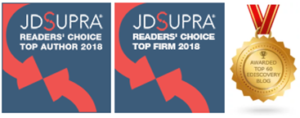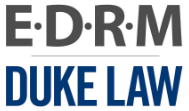eDiscovery Daily Blog
EDRM Needs Your Input on its TAR Guidelines: eDiscovery Best Practices
I’m here in Durham, NC at the annual EDRM Spring Workshop at Duke Law School and, as usual, the Workshop is a terrific opportunity to discuss the creation of standards and guidelines for the legal community, as well as network with like minded people on eDiscovery topics. I’ll have more to report about this year’s Workshop next week. But, one part of the Workshop that I will touch on now is the release of the public comment version of EDRM’s Technology Assisted Review (TAR) Guidelines.
Last Friday, EDRM released the preliminary draft of its TAR Guidelines for public comment (you can download it here). EDRM and the Bolch Judicial Institute at Duke Law are seeking comments from the bench, bar, and public on a preliminary draft of Technology Assisted Review (TAR) Guidelines. Nearly 50 volunteer lawyers, e-discovery experts, software developers, scholars and judges worked on this draft under the auspices of EDRM. A version of the document was presented at the Duke Distinguished Lawyers’ conference on Technology Assisted Review, held Sept. 7-8, 2017. At that event, 15 judges and nearly 100 lawyers and practitioners provided feedback and comments on the draft. The document was further revised based on discussions at that conference, additional review by judges and additional review by EDRM members over the past couple of months (which involved significant changes and a much tighter and briefer guideline document). With the assistance of four law student fellows of the Bolch Judicial Institute, this draft was finalized in May 2018 for public comment.
So, calling this a preliminary draft is a bit of a misnomer as it has already been through several iterations of review and edit. Now, it’s the public’s turn.
EDRM states that “Comments on this preliminary draft will be carefully considered by the drafting team and an advisory group of judges as they finalize the document for publication. Please send comments on this draft, whether favorable, adverse, or otherwise, as soon as possible, but no later than Monday, July 16, 2018. Comments must be submitted in tracked edits (note: the guidelines are in a Word document for easy ability to track changes) and submitted via email to edrm@law.duke.edu. All comments will be made available to the public.”
That’s all well and good and EDRM will hopefully get a lot of useful feedback on the guideline document. However, one thing I have observed about public comment periods is that the people who tend to provide comments (i.e., geeks like us who attend EDRM workshops) are people who already understand TAR (and think they know how best to explain it to others). If the goal of the EDRM TAR guidelines is to help the general bench and bar better understand TAR, then it’s important for the average attorney to review the document and provide comments as to how useful it is.
So, if you’re an attorney or legal technology practitioner who doesn’t understand TAR, I encourage (even challenge) you to review these guidelines and provide feedback. Point out what you learned from the document and what was confusing and whether or not you feel that you have a better understanding of TAR and the considerations for when to use it and where it can be used. Ask yourself afterward if you have a better idea of how to get started using TAR and if you understand the difference between TAR approaches. If these guidelines can help a lot of members of the legal profession better understand TAR, that will be the true measure of its effectiveness.
Oh, and by the way, Europe’s General Data Protection Regulation is now in effect! Are you ready? If not, you might want to check out this webcast.
So, what do you think? Will these guidelines help the average attorney or judge better understand TAR? Please share any comments you might have or if you’d like to know more about a particular topic.

Sponsor: This blog is sponsored by CloudNine, which is a data and legal discovery technology company with proven expertise in simplifying and automating the discovery of data for audits, investigations, and litigation. Used by legal and business customers worldwide including more than 50 of the top 250 Am Law firms and many of the world’s leading corporations, CloudNine’s eDiscovery automation software and services help customers gain insight and intelligence on electronic data.
Disclaimer: The views represented herein are exclusively the views of the author, and do not necessarily represent the views held by CloudNine. eDiscovery Daily is made available by CloudNine solely for educational purposes to provide general information about general eDiscovery principles and not to provide specific legal advice applicable to any particular circumstance. eDiscovery Daily should not be used as a substitute for competent legal advice from a lawyer you have retained and who has agreed to represent you.

